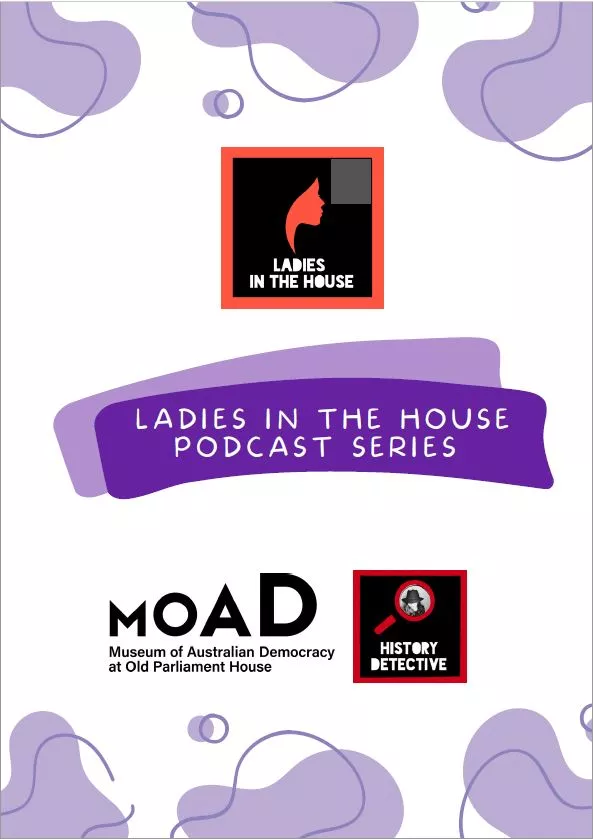Ladies in the House: Case 3: Janine Haines
Intro
Hi, this is Kelly Chase and you are listening to a Museum of Australian Democracy and History Detective Collaboration: Ladies in the House. In this 3-part series we are going to celebrate the lives of three incredible women who worked in Old Parliament House- the building that now houses the Museum of Australian Democracy- and we will explore how these significant women contributed to Australian democracy.
In this episode I would like to introduce you to Janine Haines who was the first woman ever to be elected the leader of an Australian political party.
Janine Haines grew up in South Australia, and after studying mathematics at university she became a teacher and taught in Adelaide for around 10 years. In the mid 1970s she decided to get into politics because she believed that the mostly male politicians of the day did not represent the true needs of the community. In her words, “it seemed to me that Australia was being governed by middle-aged, middle-class men... These men were probably well-intentioned, but they were removed from the real world—the world of mortgages, education costs and child rearing.”
She was only 32 when she first became a Senator, and it was difficult for her to be taken seriously as a young, female politician. At her first press conference in 1977, only 6 journalists turned up with the “general opinion being that she was a pretty young thing whose presence… would at least provide a bit of decoration.” It was not easy being a woman in a man’s world. She was quickly fed up with being treated “as a decorative addition to …Parliament.” She believed that there was a double standard, and that no-one would ever tell a male Member of Parliament that he was just a decoration. However, within 10 years she had become the leader of the Australian Democrat Party. This was the first time in Australian history that a woman had led a political party.
Janine was a woman ahead of her times, when the other political parties were concerned with economic policies, she was bringing up issues about environmental sustainability. In a 1990 speech she made to the Press Club she criticised the government for having a, “Disastrously short term attitude, we have a dig it up, chop it down, shoot it and sell it mentality in this country that says we use our raw resources as fast as we can.” She believed that that politicians needed to think beyond the short election cycles and have long term sustainable solutions. In her words, “Unless we protect our environment, we are in deadly danger of leaving no future for our children.”
But it was not just the environment that she advocated for, she also fought for the rights of the people; Indigenous Australians, women, low income earners, and children. In 1983 she was astounded when the Commonwealth Public Service Board put nurses in the same pay classification as cleaners and parking inspectors. She argued that registered nurses were trained with university level degrees and were highly skilled professionals and deserved a pay rate that reflected this.
Her concerns about the community health sector continued as she headed a committee to improve the standard of care that was given to the elderly in nursing homes. On the other end of the spectrum she also pushed for affordable childcare for working mothers.
Janine also wanted to improve the education system and she was a huge advocate for girls studying maths and science. Additionally, she was concerned because Australia had a compulsory voting system, but schools did not teach about how the government worked. She strongly believed that children should learn about democracy so that when they became old enough to vote they could make informed decisions.
Janine Haines was a strong willed, quick witted and incredibly well-read politician who challenged the policies of the other Senators and always looked out for the best interests of both the people and the environment.
In 2001, 3 years before her death, she was appointed as a Member of the Order of Australia, which is an award recognising outstanding service to the country. Upon her death, her former colleague in the Democratic party said about her, “she was a very determined lady, [with] a tremendous sense of humour… I think the major legacy that Janine leaves behind is as a role model for women.”
Call to action
Janine was an avid supporter of sustainability and environmental issues. What are some of the current environmental issues we face? And what are some things you can do to help make a more sustainable world for the future?
This is Kelly Chase on the Case







